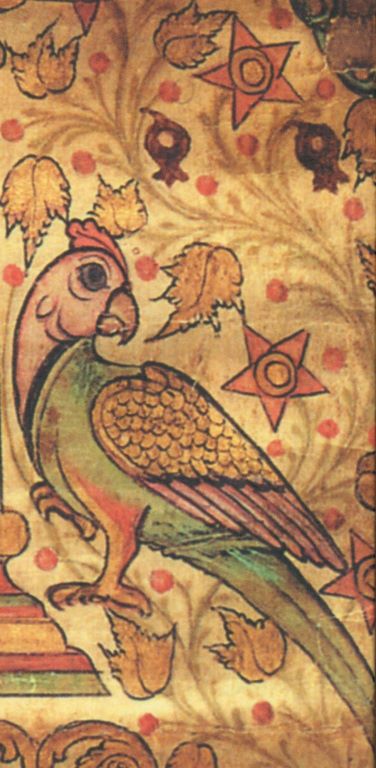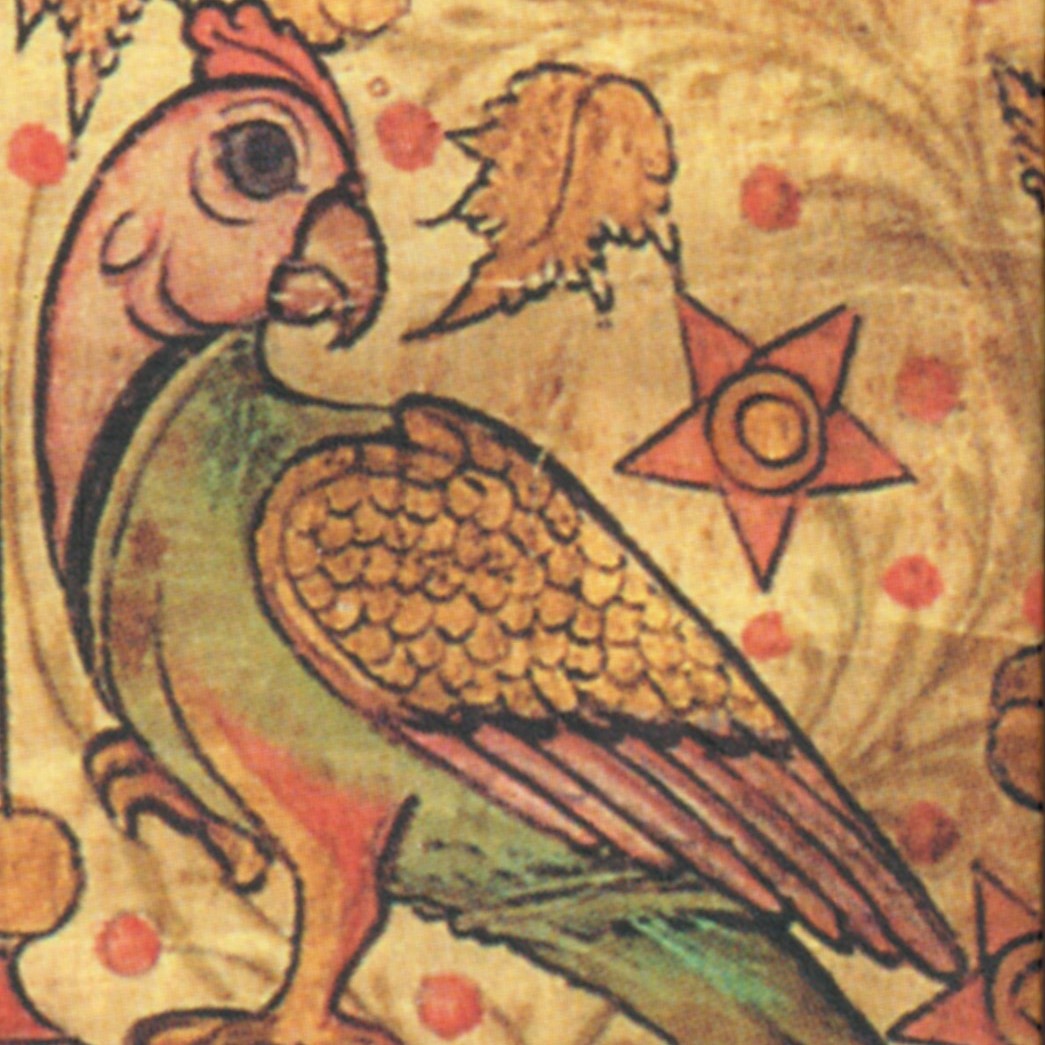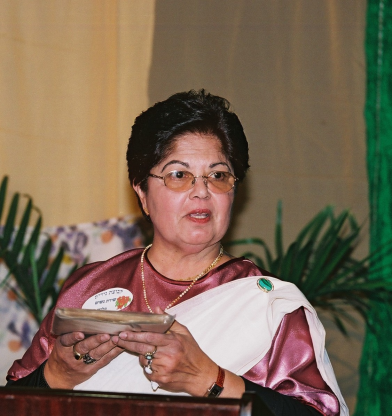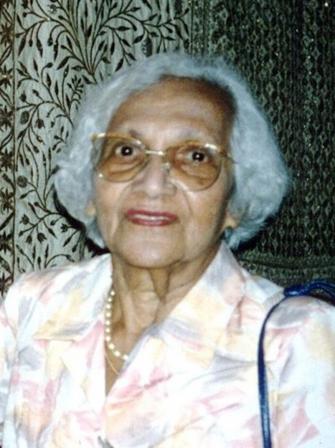1977
1. Oh Lovely Parrot!
Sarah Cohen, Ruby S. Hallegua. Recorded by Barbara Johnson, Kochi, January 2, 1977; I-7.
Pāloḍu paḻaṃ taruven Ayyayya
Payiṅgiḷiyĕ ninakken Ayyayya
1a. Parur version
1. Milk with fruit I’ll give to you; Ayyayya
O lovely parrot, I will give. Ayyayya2. I will pluck and give to you; Ayyayya
O lovely parrot, I will give. Ayyayya3. ’Tis heard that a forest flowed with milk. Ayyayya
Birds were sitting there, raised up high. Ayyayya4. The five-colored parrots dwelling there Ayyayya
Were birds living in a golden cage. Ayyayya5. All who saw them there were overjoyed. Ayyayya
They dwelt in a forest of pure gold! Ayyayya6. The coming of the hunter then they spied. Ayyayya
He trapped them in a mighty net. Ayyayya7. Flailing, flopping, anguished, down they dropped. Ayyayya
The netted fell, the freed ones flew away. Ayyayya8. How could they bear this agony? Ayyayya
From the forest they sought a resting place. Ayyayya9. Separating by their different kinds, Ayyayya
Ten parrots joined in unity. Ayyayya10. But the ones who quarreled terribly Ayyayya
Pecked each other, pecked their feathers out. Ayyayya11. The Palur sea knew what had come to pass. Ayyayya
The short palm trees witnessed these events. Ayyayya12. When all the birds were sitting in a row, Ayyayya
When the hunter came into their sight, Ayyayya13. Fluttering and flapping, off they flew. Ayyayya
The small forest trees saw them fly. Ayyayya14. From the forest, they ended at the sea— Ayyayya
Those parrots that plucked and flew away, Ayyayya15. Those parrots that used to sit so high! Ayyayya
Hearing this is more than one can bear. Ayyayya
1b. Kochi version
1. Milk with fruit I’ll give to you; Ayyayya
O lovely parrot, I will give. Ayyayya2. Kovil[1] fruit I will pluck, Ayyayya
And I will give the fruit to you. Ayyayya3. If you will tell me some good news, Ayyayya
Parrot, I will give the fruit to you. Ayyayya4. This happened once upon a time: Ayyayya
A little bird had just begun to fly. Ayyayya5. Seeing that the bird was coming near, Ayyayya
A hunter came between to interfere. Ayyayya6. Spying the hunter on its way, Ayyayya
The bird turned pale, its color gone. Ayyayya7. The hunter’s arrow pierced the bird. Ayyayya
Flailing, flopping, anguished, down it dropped. Ayyayya8. Just for the sake of kovil fruit, Ayyayya
Listen to the parrot’s agony! Ayyayya9. Near to the seashore of Palur Ayyayya
The parrot saw the little palm trees there. Ayyayya10. Near to the seashore of Palur, Ayyayya
There the parrot went and bathed. Ayyayya11. From there it sought a place to rest, Ayyayya
But it could not find a place. Ayyayya12. A splendid green mansion then it found, Ayyayya
A festival umbrella bright with gems. Ayyayya13. A high place! This was what it found. Ayyayya
There the parrot flew and settled down. Ayyayya
Texts of this kiḷippāṭṭu (“parrot song”) genre are found in eleven notebooks; but from the perspectives of literary content and community identity, the nine from Kochi and the two from Parur display significant differences. Thus, the Parur version and the Kochi version warrant separate presentation and comparative study, following the analysis by Scaria Zacharia in this volume (also in his publications 2003, 32–37 and 2005, 135–140).
Both versions begin by inviting a parrot to tell a story, in the style of classical and folk epics in Malayalam literature. The parrot addressed here is a special one, a payinkiḷi—literally translated as a “green parrot,” and in Jewish Malayalam an epithet for a very beautiful woman— hence the title “Oh, Lovely Parrot!” The parrot then relates an origin story, in which a parrot or parrots also become the central actor or actors in the story. According to Ruby Daniel and other singers, these parrots allegorically represent the ancestors of the Jews who are singing the song. In both versions, the parrot or parrots start out living in or near Palur but are forced to flee from a dangerous hunter, and then find another place to dwell.
The mention of Palur in these two songs and two others (songs 2 and 14) points to a tradition of Jewish roots in what is now the small town of Palayur, as noted in the introduction to this section. The hunter who threatens the bird or birds may symbolize the Portuguese, who were the only historical enemies of the Kerala Jews. Though there is no record of a Portuguese attack on Jews in Palur, there were documented Portuguese attacks on Jews in Kodungallur, Parur and Kochi during the colonial period. In the Kochi variant, the bird is wounded by the hunter’s arrow but manages to recover and fly to safety, whereas in the Parur version some of the parrots are trapped in the hunter’s terrible net, and only some escape. In the Kochi version, the parrot notices the little palm trees when it bathes in the Palur sea, but the point of view is different in the Parur version, where the same trees bear witness to all the parrots’ suffering.
The Parur song is more dramatic and richer in descriptive detail, but the greatest contrast between the two versions is played out in the trajectory of the parrots’ journeys. The Parur version describes the birds as “five-colored” parrots—a type of South Indian birds that are brilliantly colored in red, orange, green, black, and white (also mentioned in song 9). Initially they are described as living “raised up high” in a “golden” forest of comfort and splendor, flowing with milk,[2] but then follows their tragic decline. After the hunter’s attack they scattered, dividing into separate groups. The group founded by ten parrots (signifying the minyan or quorum of ten required for Jewish prayer) apparently survived, but the others “quarreled terribly” and lost their elevated position. At two points in this version, the narrator interjects an expression of extreme sorrow. Zacharia suggests that this variant may point to a folk memory or tradition of a glorious but lost past in Palur or in Parur itself. In addition, the quarreling birds pecking out each other’s feathers may reflect historical rivalries among the different Kerala Jewish communities.
In contrast, the Kochi version portrays a parrot who escapes from the hunter despite his wounds and finds a wonderful new home in a high place, poetically compared to both a green mansion and a shiny decorated umbrella for festival processions. Zacharia suggests that the “high place” in the final two verses is Kochi itself, referring to the privileged economic and political position of the Kochi Jews in recent centuries. However, I would not discount the suggestion by P.M. Jussay (1986a, 153) that the high place is Chendamangalam, where the Jewish synagogue and neighborhood are located on a hill surrounded by green coconut groves.
In terms of genre, this song is a not only a “parrot song,” but also a typical Kerala kaḷippāṭṭu[3] or “play song” performed for special occasions by a group of women dancing in a circle, its repeated rhythmic pattern punctuated with their clapping of hands, stamping of feet and the repetitious “ayyayya” chorus. (See Johnson 2006.) The two Paradesi women who recorded it for me in 1977 told me that it was not their song, but they knew it because they used to enjoy attending parties where it was sung with dancing by women in another community, referring to Kadavumbhagam-Kochi at the other end of Jew Street.
Four years later the song was recorded again in Israel, in Avigdor Herzog’s video recording of a 1981 Hanukkah performance in Moshav Taoz by a group of women from Kadavumbhagam-Kochi, the only Jewish community whose women performed these dances in recent memory. When Marcia Walerstein-Sibony observed a performance by some of the same women in 1984, she was told that these dances were originally performed in Chendamangalam, where the ancestors of some Kadavumbhagam-Kochi families lived until the late nineteenth century (Walerstein 1987, 275), and I also was told in Israel about the Chendamangalam origin of the dances. This tradition may add strength to Jussay’s identification of the parrot song with that location.
________________________________
[1] Kŏvil is a particularly tasty and attractive fruit (Zacharia 2005, 139).
[2] Not a Kerala image, this is probably a Jewish reference echoing the biblical description of the Land of Israel as “a land flowing with milk and honey” (for example, Exodus 3, 8)
[3] This is a shorter form of the term kaikottikkaḷippāṭṭu used by Zacharia in his article for this volume. For our purposes the two terms are interchangeable.







